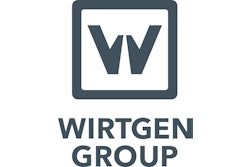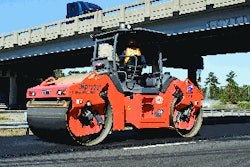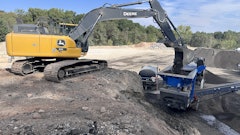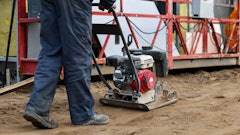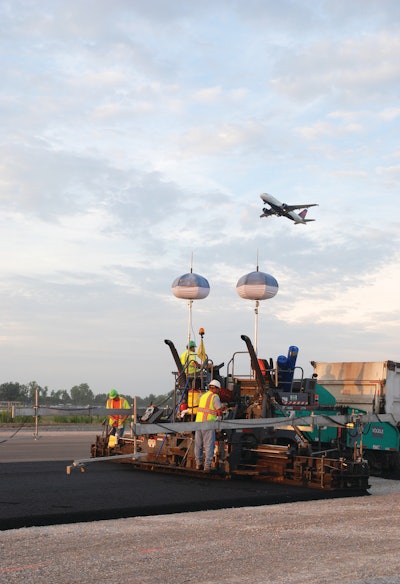
The heart of the Runway 10R/28L replacement project at Port Columbus International Airport in Ohio is a new 10,113-ft.-long by 150-ft.-wide runway, plus two 25-ft. shoulders, with Category I instrument landing system (ILS) approaches, located 702 ft. south of the existing Runway 10R/28L. The entire four-year project, which includes modifications to the airport golf course, is estimated at about $143 million.
Echelon paving, which uses two asphalt pavers at the same time on parallel tracks, was specified for asphalt lifts for the new runway. This paving technique is important in attaining the smoothness required for airport pavements, since it all but eliminates the “cold” longitudinal joint between adjoining lifts.
“Hot-to-hot echelon paving gives us a better looking job, and we need not take cores over the joint as we have to do when paving cold joints,” says Ed Rouan, asphalt superintendent for contractor Shelly & Sands, Inc., Columbus, OH.
A Lot of Asphalt
According to the Columbus Regional Airport Authority, the runway construction project covers over 500 acres, with approximately 400,000 cu. yds. of earthwork involved. Some 350,000 sq. yds. of cement-stabilized base underlies approximately 410,000 tons of asphalt placed for the project.
A pavement life-cycle cost analysis by design engineer CH2M Hill indicated an asphalt pavement with a pavement section of 16 in. of asphalt above 11 in. of stone, all above a 12-in. cement-stabilized base. Approximately five miles of storm sewer and 28 miles of electrical cable also were installed.
“It’s a lot of asphalt,” Rouan says. “Base totaled 186,300 tons, surface mix 123,300 tons and shoulders 46,600 tons — a total of 356,200 tons of asphalt mix.” On good nights, Shelly & Sands was placing 5,100 tons of asphalt.
All surfaces were to include a 5-in. surface course in two 2 1/2-in. lifts compacted to 98% of density. Associated new taxiways would be 75 ft. in width with two 25-ft. shoulders built of 7-in. base plus 5 in. of surface mix, for a total of 12 in.
Two Vögele Vision 5200-2 asphalt pavers were used in 24- to 27-ft.-wide passes. Niveltronic paver control systems, utilizing skis on each side of the paver, helped to maintain smoothness specs. “Earlier in 2012, there was one area that had to be milled to get to spec, but we barely got a wheelbarrow of millings off it,” Rouan says.
The pavers were supplemented by Hamm HD 130, HD 120 and HD O120V rollers. A new Hamm GRW 280 pneumatic compactor was one of two rubber-tired rollers used.
A single pneumatic roller was used in the breakdown position. “We went up front with the pneumatic rollers to get breakdown compaction, as we have been getting better luck with that set-up,” Rouan indicates. “It kneads the material better and we come up with better numbers.” The pneumatic rollers got each lift up to the high 80s, and even 90.
The pneumatics were followed by a vibratory roller, with a Hamm Oscillation roller providing finish compaction. Oscillation compaction works by imparting a horizontal or rocking force into the base material, with the drum never leaving the mat. The result is better compaction in fewer passes, with less vibration-related wear and tear on operators and surroundings.
“Oscillation gets our final numbers up to where we need them,” Rouan states. “If we need to bring the density up a couple of notches — from, say, 94 or 95 to 98 — we get that performance out of it.”
Awaits June Commissioning
Night work was undertaken on the project to take advantage of every opportunity to accelerate the work. “We were up against a strict deadline, and there are other demands on the asphalt plant during the day,” Rouan says.
Paving was completed in early November 2012, and the navigational aids, airfield signage and lighting were being installed in early 2013 in preparation for the FAA flight checks scheduled for March and May 2013. The commissioning date of the replacement runway is June 27th. The final phase of the replacement runway program will commence immediately following commissioning, with the existing south runway converted to a taxiway.




